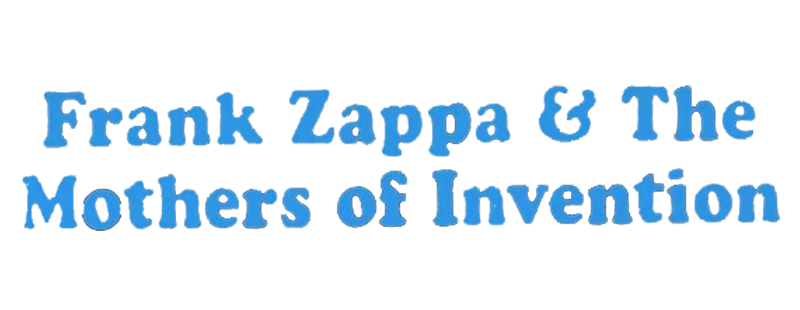Cover NOT yet available in
Join Patreon for 4K upload/download access
Your Rating (Click a star below)
![]()
![]()
![]()
![]()
![]()
![]()
![]()
![]()
![]()
![]()
Track List
01) Uncle Meat: Main Title Theme
02) The Voice of Cheese
03) Nine Types of Industrial Pollution
04) Zolar Czakl
05) Dog Breath, in the Year of the Plague
06) The Legend of the Golden Arches
07) Louie Louie (at the Royal Albert Hall in Lon
08) The Dog Breath Variations
09) Sleeping in a Jar
10) Our Bizarre Relationship
11) The Uncle Meat Variations
12) Electric Aunt Jemima
13) Prelude to King Kong
14) God Bless America
15) A Pound for a Brown on the Bus
16) Ian Underwood Whips It Out
17) Mr. Green Genes
18) We Can Shoot You
19) “If We'd All Been Living in California…�
20) The Air
21) Project X
22) Cruising for Burgers
Cd 2
01) Uncle Meat Film Excerpt, Part I
02) Tengo na minchia tanta
03) Uncle Meat Film Excerpt, Part II
04) King Kong Itself (as played by the Mothers in a st
05) King Kong (its magnificence as interpreted by Dom
06) King Kong (as Motorhead explains it)
07) King Kong (the Gardner Varieties)
08) King Kong (as played by 3 deranged Good Humor Truc
09) King Kong
01) Uncle Meat: Main Title Theme
02) The Voice of Cheese
03) Nine Types of Industrial Pollution
04) Zolar Czakl
05) Dog Breath, in the Year of the Plague
06) The Legend of the Golden Arches
07) Louie Louie (at the Royal Albert Hall in Lon
08) The Dog Breath Variations
09) Sleeping in a Jar
10) Our Bizarre Relationship
11) The Uncle Meat Variations
12) Electric Aunt Jemima
13) Prelude to King Kong
14) God Bless America
15) A Pound for a Brown on the Bus
16) Ian Underwood Whips It Out
17) Mr. Green Genes
18) We Can Shoot You
19) “If We'd All Been Living in California…�
20) The Air
21) Project X
22) Cruising for Burgers
Cd 2
01) Uncle Meat Film Excerpt, Part I
02) Tengo na minchia tanta
03) Uncle Meat Film Excerpt, Part II
04) King Kong Itself (as played by the Mothers in a st
05) King Kong (its magnificence as interpreted by Dom
06) King Kong (as Motorhead explains it)
07) King Kong (the Gardner Varieties)
08) King Kong (as played by 3 deranged Good Humor Truc
09) King Kong
1:55
0:26
6:00
0:54
3:59
3:27
2:19
1:48
0:50
1:05
4:46
1:46
3:38
1:10
1:29
5:05
3:14
2:03
1:14
2:57
4:49
2:17
37:34
3:46
3:51
0:49
1:21
1:44
6:17
0:34
7:23
Data Complete
 60%
60%
Total Rating
 60%
60%Total Rating
![]() (1 users)
(1 users)
Back Cover![]()
CD Art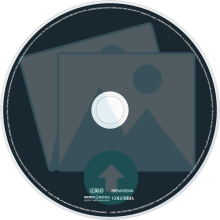
3D Case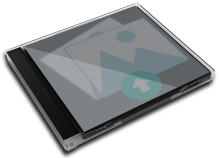
3D Thumb
3D Flat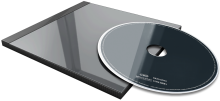
3D Face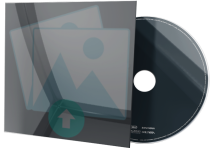
3D Spine
First Released
![]() 1969
1969
![]() Experimental
Experimental
![]() Quirky
Quirky
![]() Rock/Pop
Rock/Pop
![]() ---
---
![]() Medium
Medium
![]() Album
Album
![]() 0 copies
0 copies
Album Description
Available in:
Uncle Meat is the fifth studio album by the Mothers of Invention, released as a double album in 1969. Uncle Meat was originally developed as a part of No Commercial Potential, a project which spawned three other albums sharing a conceptual connection: We're Only in It for the Money, Lumpy Gravy and Cruising with Ruben & the Jets.
The album also served as a soundtrack album to a proposed science fiction film which would not be completed, though a direct-to-video film containing test footage from the project was released by Zappa in 1987. The music is diverse in style, drawing from orchestral, jazz, blues and rock music. Uncle Meat was a commercial success upon release, and has been highly acclaimed for its innovative recording and editing techniques, including experiments in tape speed and overdubbing, and diverse sound.
Frank Zappa, who had been interested in film since high school, decided to develop a film vehicle for The Mothers of Invention, entitled Uncle Meat. The proposed film would combine elements of science fiction and road stories inspired by the band's sexual escapades. Subsequently, Zappa began working on a project called No Commercial Potential, which eventually became the albums We're Only in It for the Money, Lumpy Gravy, Cruising with Ruben & the Jets and Uncle Meat. Zappa stated, "It's all one album. All the material in the albums is organically related and if I had all the master tapes and I could take a razor blade and cut them apart and put it together again in a different order it still would make one piece of music you can listen to. Then I could take that razor blade and cut it apart and reassemble it a different way, and it still would make sense. I could do this twenty ways. The material is definitely related."
According to artist Cal Schenkel, "I started working on the story of Ruben and the Jets that is connected with the Uncle Meat story, which is this old guy turns this teenage band into these dog snout people [...] We started that before it actually became Ruben and the Jets. That came out of my love for comics and that style, the anthropomorphic animals, but also it was part of a running story line."
For the recording sessions, Zappa utilized 12 track recording technology, as well as a variety of techniques which realized his vision, including a large number of overdubs, playing unconventional instruments through studio effects, and speeding up or slowing down recordings for artistic effect. Zappa wanted to make an album that would challenge the complacency of contemporary music fans, as he felt that his fanbase was "accoustomed to accepting everything that was handed to them [...] politically, musically, socially -- everything. Somebody would just hand it to them and they wouldn't question it. It was my campaign in those days to do things that would shake people out of that complacency, or that ignorance and make them question things."
Uncle Meat featured a variety of music styles, including orchestral symphonies, free jazz, blues, doo wop and rock and roll. The album also contains spoken word segments featuring Suzy Creamcheese, and features a stronger focus on percussion instrumentation than previous works by Zappa, as well as emphasizing his strengths as a composer and arranger.
"Nine Types of Industrial Pollution" is melodically formless rooted in percussion instrumentation, and features a guitar solo that was sped up in post production. "Dog Breath, in the Year of the Plague" is delivered as a rock and roll song, with the same theme being repeated as an instrumental later in the album, performed by keyboards, percussion and acoustic guitar. The rock and roll version features three verses with the first chorus being delivered by opera singer Nelcy Walker, and the second chorus featuring sped up vocals. After the third verse, the song becomes an avant garde orchestral piece performed by percussion, keyboards and instruments that, according to the album liner notes "...sound like trumpets (but) are actually clarinets played through an electric device made by Maestro with a setting labeled Oboe D'Amore and sped up a minor third with a V.S.O. (variable speed oscillator)"..
In addition to the studio recordings, Uncle Meat featured live recordings made at the Royal Albert Hall, including a recording of Don Preston playing "Louie Louie" on the Albert Hall pipe organ, at the end of which Zappa announces it as having been performed by the "London Philharmonic Orchestra." The doo wop-influenced "Electric Aunt Jemima" refers to Zappa's guitar amplifier, equating it with the advertising character Aunt Jemima. Zappa explained, "I get kind of a laugh out of the fact that other people are going to try to interpret that stuff and come up with some grotesque interpretations of it. It gives me a certain amount of satisfaction."
The album concludes with the piece in 3/4 called "King Kong", although the instrumental's prelude, a free jazz improvisation over a rhythm section playing in a 5/8 time signature, occurs much earlier in the album. Six variations of the melody appear as the album's finale, with the first establishing its simple melody, the second being a Fender Rhodes Electric Piano solo by Preston, the third showcasing a Saxophone solo by Motorhead Sherwood, and the fourth featuring Bunk Gardner playing a Soprano Saxophone through various electronic effects that emulate the sound of a Contrabassoon doubling his solo lines. Two more variations conclude the piece, which include a live recorded performance featuring a Saxophone solo by Ian Underwood and then finally ending with a version with sped up Gongs, overblown Saxophones and other instruments.
Uncle Meat was released as a double album by Bizarre and Reprise Records, subtitled "Most of the music from the Mother's movie of the same name which we haven't got enough money to finish yet." Despite the album's experimental nature, it peaked at #43 on the Billboard charts.
Contemporary reviews of the album were highly favorable, recognizing it as a blueprint in Zappa's discography. The New Rolling Stone Album Guide described the album as an "inspired monstrosity [...] [an] assault of glorious noise." Allmusic writer Steve Huey wrote, "despite the absence of a conceptual framework, the unfocused sprawl of Uncle Meat is actually a big part of its appeal. It's exciting to hear one of the most creatively fertile minds in rock pushing restlessly into new territory, even if he isn't always quite sure where he's going." Piero Scaruffi gave the album a nine out of ten rating.
In 1987, a completed Uncle Meat film was released on home video, and the Uncle Meat album was subsequently reissued as a double CD which included a song recorded in 1982, "Tengo Na Minchia Tanta", sung in Sicilian by Massimo Bassoli, who identifies the song as being translated as "I've Got a Big Bunch Of Dick", and over 40 minutes' worth of soundbites and dialogue from the film. The track listing programs the new tracks at the beginning of the second disc, placing the material between the album's original third and fourth sides.

User Album Review
None...
External Album Reviews
None...
User Comments


Available in:
Uncle Meat is the fifth studio album by the Mothers of Invention, released as a double album in 1969. Uncle Meat was originally developed as a part of No Commercial Potential, a project which spawned three other albums sharing a conceptual connection: We're Only in It for the Money, Lumpy Gravy and Cruising with Ruben & the Jets.
The album also served as a soundtrack album to a proposed science fiction film which would not be completed, though a direct-to-video film containing test footage from the project was released by Zappa in 1987. The music is diverse in style, drawing from orchestral, jazz, blues and rock music. Uncle Meat was a commercial success upon release, and has been highly acclaimed for its innovative recording and editing techniques, including experiments in tape speed and overdubbing, and diverse sound.
Frank Zappa, who had been interested in film since high school, decided to develop a film vehicle for The Mothers of Invention, entitled Uncle Meat. The proposed film would combine elements of science fiction and road stories inspired by the band's sexual escapades. Subsequently, Zappa began working on a project called No Commercial Potential, which eventually became the albums We're Only in It for the Money, Lumpy Gravy, Cruising with Ruben & the Jets and Uncle Meat. Zappa stated, "It's all one album. All the material in the albums is organically related and if I had all the master tapes and I could take a razor blade and cut them apart and put it together again in a different order it still would make one piece of music you can listen to. Then I could take that razor blade and cut it apart and reassemble it a different way, and it still would make sense. I could do this twenty ways. The material is definitely related."
According to artist Cal Schenkel, "I started working on the story of Ruben and the Jets that is connected with the Uncle Meat story, which is this old guy turns this teenage band into these dog snout people [...] We started that before it actually became Ruben and the Jets. That came out of my love for comics and that style, the anthropomorphic animals, but also it was part of a running story line."
For the recording sessions, Zappa utilized 12 track recording technology, as well as a variety of techniques which realized his vision, including a large number of overdubs, playing unconventional instruments through studio effects, and speeding up or slowing down recordings for artistic effect. Zappa wanted to make an album that would challenge the complacency of contemporary music fans, as he felt that his fanbase was "accoustomed to accepting everything that was handed to them [...] politically, musically, socially -- everything. Somebody would just hand it to them and they wouldn't question it. It was my campaign in those days to do things that would shake people out of that complacency, or that ignorance and make them question things."
Uncle Meat featured a variety of music styles, including orchestral symphonies, free jazz, blues, doo wop and rock and roll. The album also contains spoken word segments featuring Suzy Creamcheese, and features a stronger focus on percussion instrumentation than previous works by Zappa, as well as emphasizing his strengths as a composer and arranger.
"Nine Types of Industrial Pollution" is melodically formless rooted in percussion instrumentation, and features a guitar solo that was sped up in post production. "Dog Breath, in the Year of the Plague" is delivered as a rock and roll song, with the same theme being repeated as an instrumental later in the album, performed by keyboards, percussion and acoustic guitar. The rock and roll version features three verses with the first chorus being delivered by opera singer Nelcy Walker, and the second chorus featuring sped up vocals. After the third verse, the song becomes an avant garde orchestral piece performed by percussion, keyboards and instruments that, according to the album liner notes "...sound like trumpets (but) are actually clarinets played through an electric device made by Maestro with a setting labeled Oboe D'Amore and sped up a minor third with a V.S.O. (variable speed oscillator)"..
In addition to the studio recordings, Uncle Meat featured live recordings made at the Royal Albert Hall, including a recording of Don Preston playing "Louie Louie" on the Albert Hall pipe organ, at the end of which Zappa announces it as having been performed by the "London Philharmonic Orchestra." The doo wop-influenced "Electric Aunt Jemima" refers to Zappa's guitar amplifier, equating it with the advertising character Aunt Jemima. Zappa explained, "I get kind of a laugh out of the fact that other people are going to try to interpret that stuff and come up with some grotesque interpretations of it. It gives me a certain amount of satisfaction."
The album concludes with the piece in 3/4 called "King Kong", although the instrumental's prelude, a free jazz improvisation over a rhythm section playing in a 5/8 time signature, occurs much earlier in the album. Six variations of the melody appear as the album's finale, with the first establishing its simple melody, the second being a Fender Rhodes Electric Piano solo by Preston, the third showcasing a Saxophone solo by Motorhead Sherwood, and the fourth featuring Bunk Gardner playing a Soprano Saxophone through various electronic effects that emulate the sound of a Contrabassoon doubling his solo lines. Two more variations conclude the piece, which include a live recorded performance featuring a Saxophone solo by Ian Underwood and then finally ending with a version with sped up Gongs, overblown Saxophones and other instruments.
Uncle Meat was released as a double album by Bizarre and Reprise Records, subtitled "Most of the music from the Mother's movie of the same name which we haven't got enough money to finish yet." Despite the album's experimental nature, it peaked at #43 on the Billboard charts.
Contemporary reviews of the album were highly favorable, recognizing it as a blueprint in Zappa's discography. The New Rolling Stone Album Guide described the album as an "inspired monstrosity [...] [an] assault of glorious noise." Allmusic writer Steve Huey wrote, "despite the absence of a conceptual framework, the unfocused sprawl of Uncle Meat is actually a big part of its appeal. It's exciting to hear one of the most creatively fertile minds in rock pushing restlessly into new territory, even if he isn't always quite sure where he's going." Piero Scaruffi gave the album a nine out of ten rating.
In 1987, a completed Uncle Meat film was released on home video, and the Uncle Meat album was subsequently reissued as a double CD which included a song recorded in 1982, "Tengo Na Minchia Tanta", sung in Sicilian by Massimo Bassoli, who identifies the song as being translated as "I've Got a Big Bunch Of Dick", and over 40 minutes' worth of soundbites and dialogue from the film. The track listing programs the new tracks at the beginning of the second disc, placing the material between the album's original third and fourth sides.
User Album Review
None...
External Album Reviews
None...
User Comments

No comments yet...

